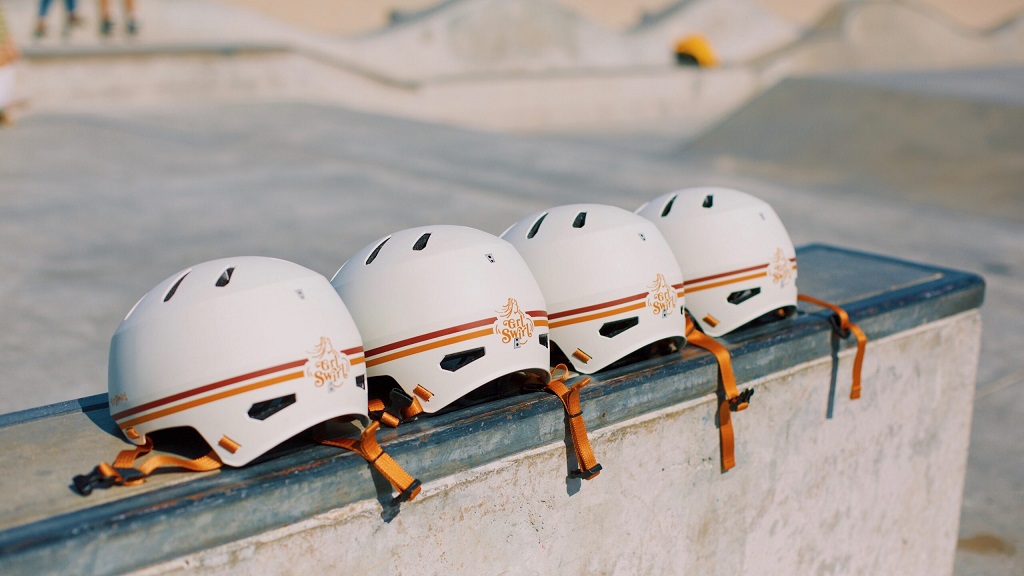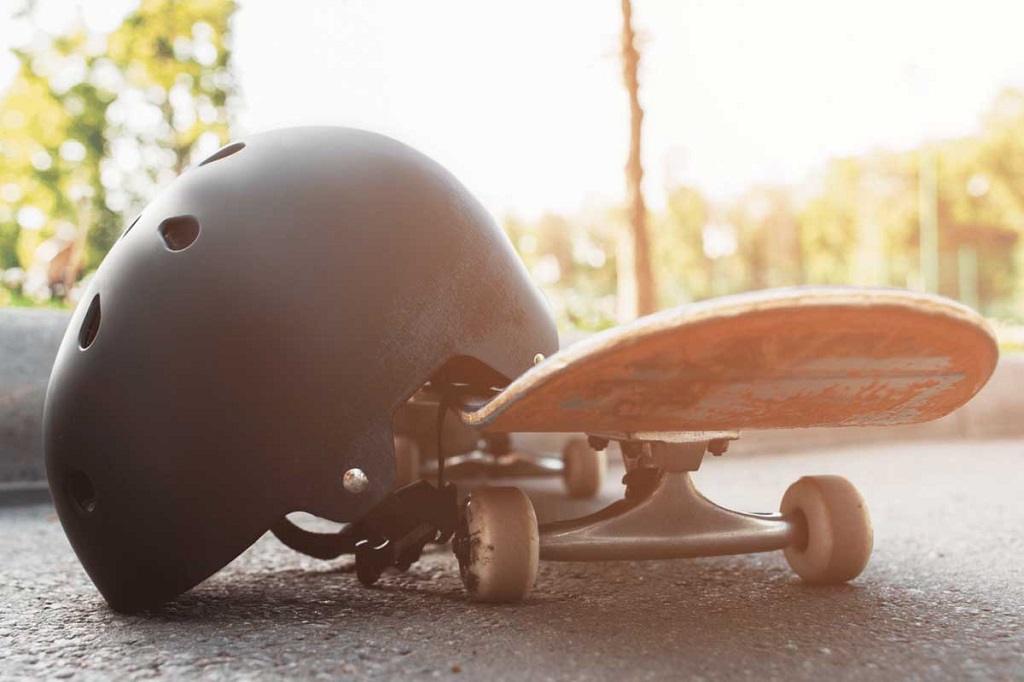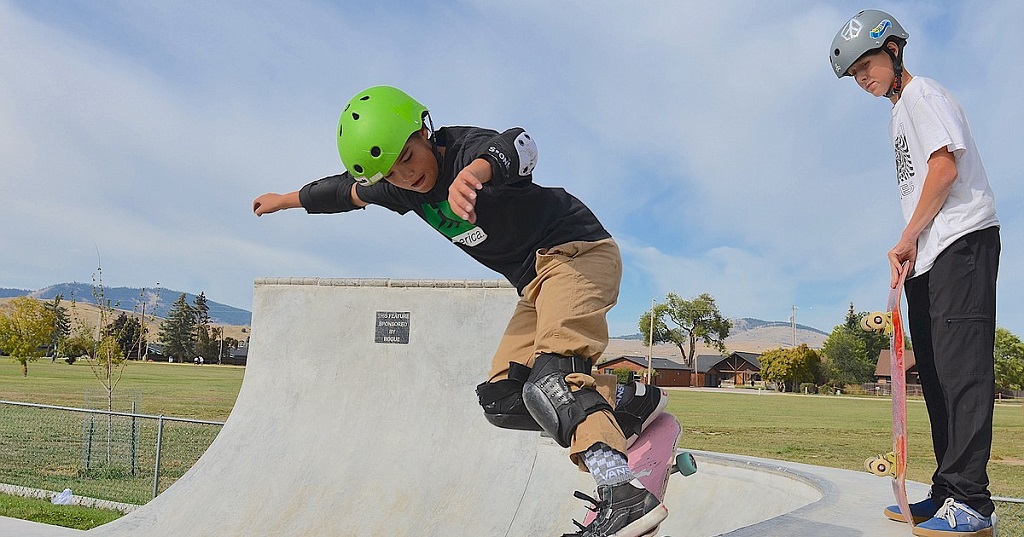
28 Sep How Long Does a Skateboard Helmet Last?
Hey there, fellow skateboard enthusiasts and safety-conscious riders! If you’re passionate about skating, you already know how important it is to gear up properly for your sessions. Among the essential pieces of gear, the skateboard helmet takes the top spot for ensuring your noggin stays protected. But just like your favorite skateboard deck, helmets have a lifespan too. So, how long does a skateboard helmet last, and when should you think about replacing it? That’s what we’re going to dive into today, so grab your board and let’s roll!
The Lifespan of a Skateboard Helmet
First things first, let’s address the burning question: how long does a skateboard helmet last? Well, it’s not as simple as slapping an expiration date on it like a carton of milk. Instead, the longevity of a helmet depends on several factors. Discover how much does a skateboard deck weigh.
1. Usage Frequency
Think of your helmet like a pair of sneakers. If you use them daily for intense workouts, they’ll wear out faster than if you only wear them occasionally for a leisurely stroll. Similarly, if you’re a hardcore skateboarder hitting the park or streets regularly, your helmet might need replacement sooner than someone who only skates occasionally.
2. Impact History
Helmets are designed to absorb and distribute the force of impacts to protect your head. If your helmet has taken a serious hit, even if it looks fine on the outside, it might have internal damage that compromises its effectiveness. It’s crucial to replace your helmet after any significant impact.
3. Quality and Material
The quality of the helmet and the materials it’s made of play a significant role in its lifespan. High-quality helmets made with robust materials tend to last longer than their cheaper counterparts. It’s an investment in safety that pays off.
4. Proper Care and Maintenance
How you treat your helmet matters. Storing it in a cool, dry place away from direct sunlight and extreme temperatures helps prolong its life. Regularly cleaning the outer shell and straps with mild soap and water can prevent premature deterioration.
5. Manufacturer Recommendations
Always check the manufacturer’s guidelines for your specific helmet model. They often provide insights into the expected lifespan and when it’s time to retire your helmet.
Now that we’ve covered the factors influencing a helmet’s lifespan let’s delve into some approximate timelines.
Typical Helmet Lifespan Estimates
You might be itching for a concrete number, so here it is: on average, a skateboard or Longboards helmet is designed to last anywhere from 3 to 5 years. Remember, though, this is a rough estimate and doesn’t account for the factors we discussed earlier. Your individual circumstances might make your helmet last longer or require a replacement sooner.
Think of it like a pair of jeans. Some people wear the same jeans for years without them fraying, while others may see holes after just a few months. It’s all about how you use and care for them.
Signs Your Skateboard Helmet Needs Replacement
Alright, you’ve been rocking that helmet for a while now, and you’re not sure if it’s time to say goodbye. No worries, we’ve got your back. Here are some clear indicators that it’s time to retire your old helmet and invest in a new one:
1. Visible Damage
If you spot any cracks, dents, or deformities on the outer shell of your helmet, it’s a surefire sign that it’s no longer providing adequate protection. Even small cracks can weaken the helmet’s structural integrity.
2. Loose or Broken Straps
The straps are what keep your helmet securely in place. If they’re frayed, worn, or broken, it’s time to replace the helmet. A loose-fitting helmet won’t stay put during a fall, defeating its purpose entirely.
3. Interior Padding Deterioration
The soft padding inside your helmet isn’t just for comfort; it also absorbs impact. If it’s worn out, flattened, or falling apart, it won’t provide the necessary protection.
4. Uncomfortable Fit
Helmets should fit snugly and comfortably on your head. If yours has become too loose, no matter how much you adjust it, it’s time to upgrade.
5. Age
As we mentioned earlier, the average lifespan of a helmet is around 3 to 5 years. If you’ve been using the same helmet for longer than that, it’s wise to consider replacing it, even if it appears to be in good condition.
6. Any Significant Impact
If you’ve had a fall or collision while wearing your helmet, it’s essential to replace it immediately, even if there are no visible signs of damage. Helmets are designed to take one impact and should be retired after that.
Why You Shouldn’t Ignore the Signs
You might be tempted to push the boundaries and keep using your old helmet even if you’ve noticed some of the signs mentioned above. After all, a new helmet can be a bit of an investment. However, it’s crucial to remember that your helmet is your primary defense against head injuries while skateboarding.
Ignoring these warning signs can put your safety at risk. Helmets are engineered to provide optimal protection when they’re in their prime condition. A damaged or old helmet may not be able to do its job effectively, which could lead to severe consequences in the event of a fall.
Think of it like driving a car with worn-out brakes. Sure, they might still work a little, but you wouldn’t trust them to stop you in an emergency. Your helmet is your emergency brake for your head, so treat it with the same level of care and respect.
Conclusion
The lowdown on skateboard helmet lifespans and when it’s time to replace them. Your safety should always come first when you’re out there shredding the streets or hitting the skatepark. Don’t skimp on protecting your noggin, and remember that a well-maintained, high-quality helmet is your best friend on four wheels. Happy skating, and stay safe out there!
FAQs
Now that we’ve covered the ins and outs of helmet lifespans and when to replace them, let’s tackle some common questions people have about skateboard helmets.
1. Can I repaint my old skateboard helmet to make it look new again?
No, it’s not recommended to repaint your helmet to make it look new. Painting your helmet can compromise its safety by concealing existing damage or altering the integrity of the materials. It’s always safer to invest in a new helmet if your old one is showing signs of wear or damage.
2. Do I need to replace my helmet after a minor fall or collision?
Yes, it’s a good practice to replace your helmet after any significant impact, even if it seems undamaged. Helmets are designed to absorb and distribute the force of a single impact, and using them after a fall can reduce their effectiveness in protecting your head during subsequent accidents.
3. Can I extend the lifespan of my skateboard helmet through proper maintenance?
While proper maintenance can help prolong the life of your helmet, it’s essential to remember that helmets have a finite lifespan. Regular cleaning and care can delay the aging process, but you should still replace your helmet after 3 to 5 years, depending on use and other factors.
4. Are there different types of helmets for different skateboarding styles?
Yes, there are different types of helmets designed for various skateboarding styles. For instance, if you’re into vert skating or aggressive downhill riding, a full-face helmet with added face protection might be a better choice. Always choose a helmet that suits your specific skateboarding style and provides the necessary protection.
5. Can I reuse a helmet after a crash if it looks undamaged?
No, you should never reuse a helmet after a crash, even if it appears undamaged. Helmets are designed to absorb and dissipate the force of a single impact, and their structural integrity may be compromised, even if there are no visible signs of damage. Replace your helmet after any significant impact to ensure your safety.

Sorry, the comment form is closed at this time.